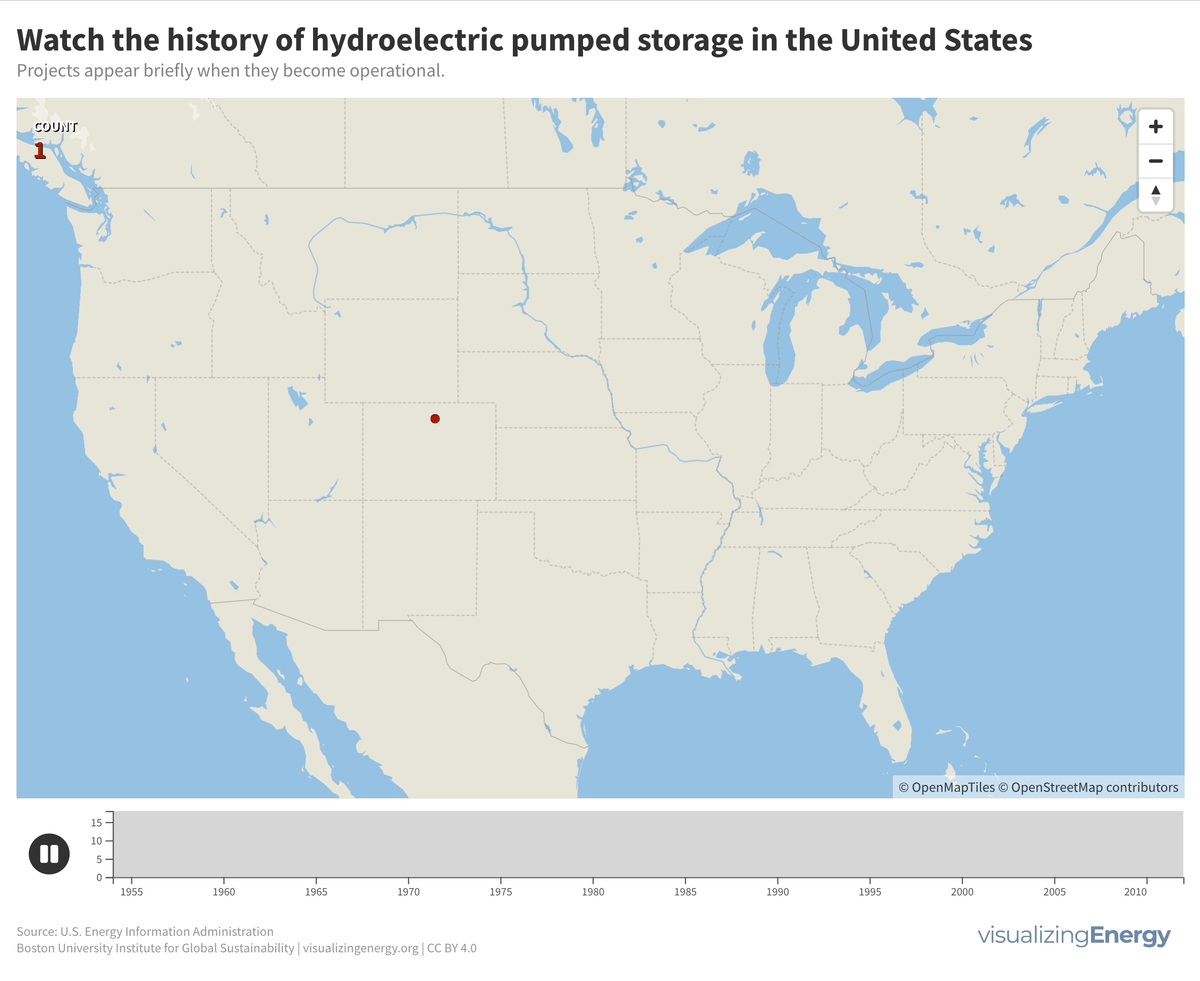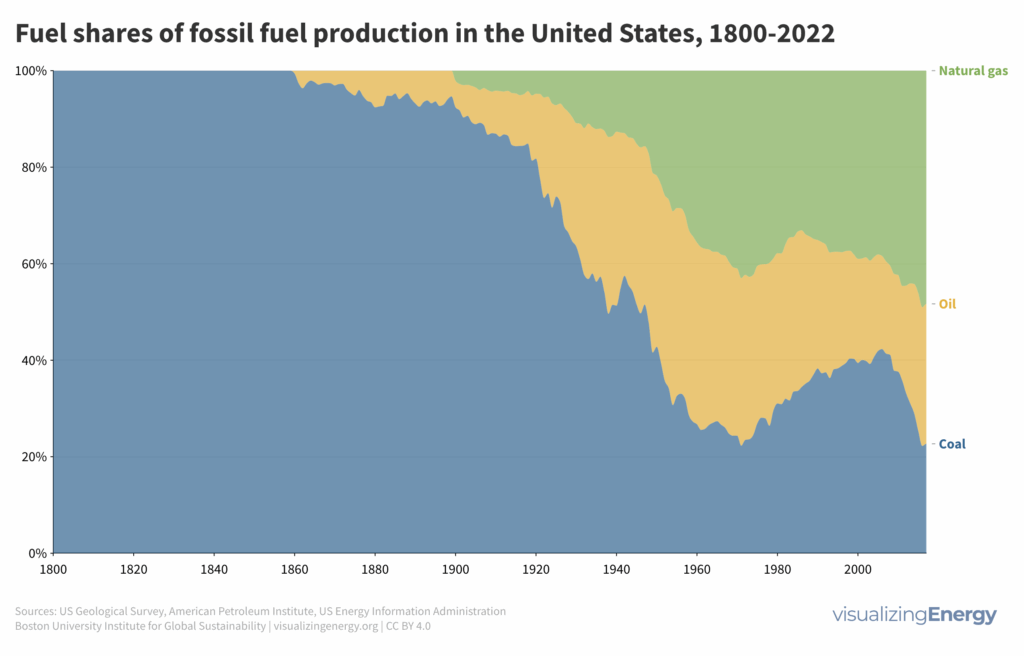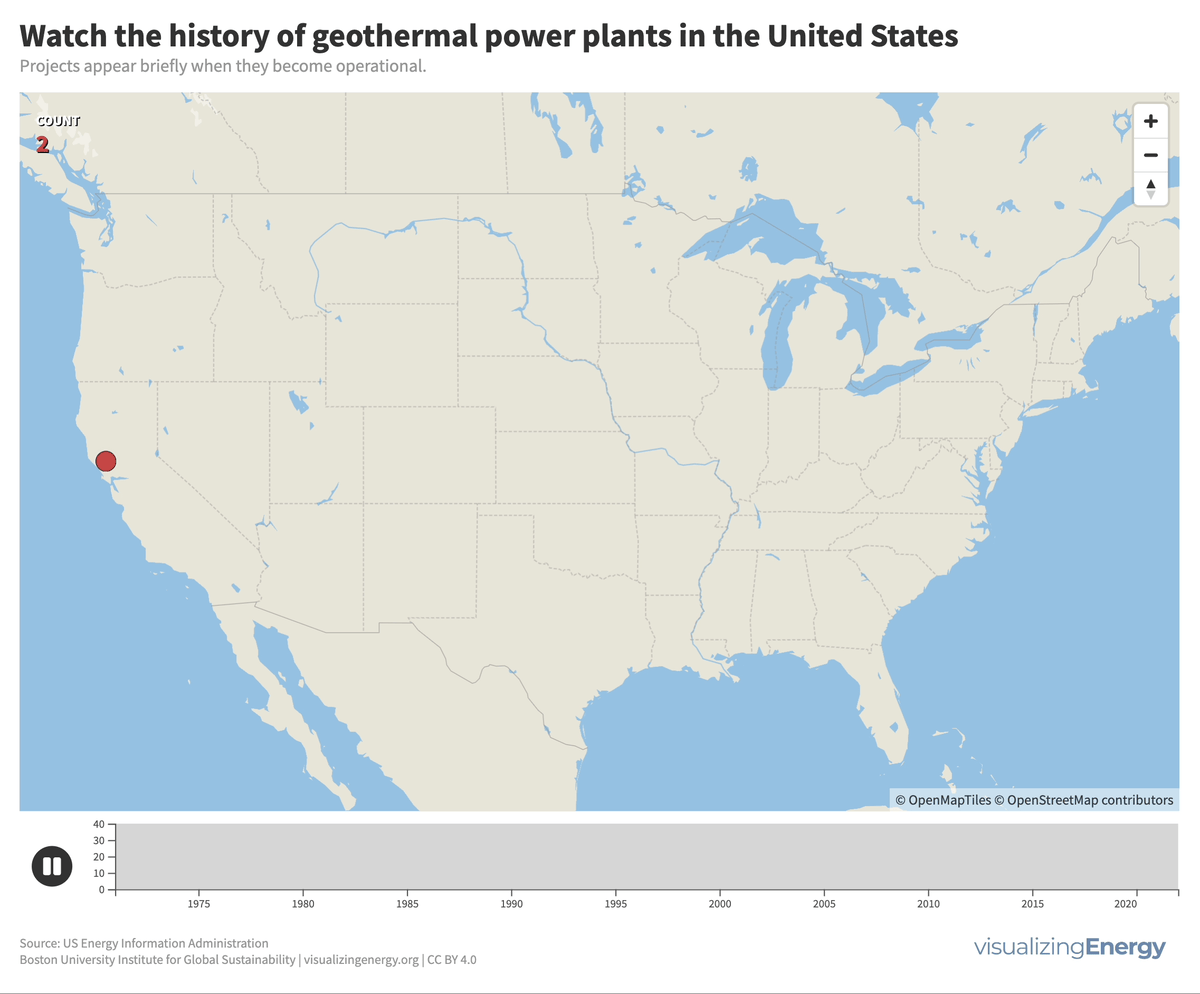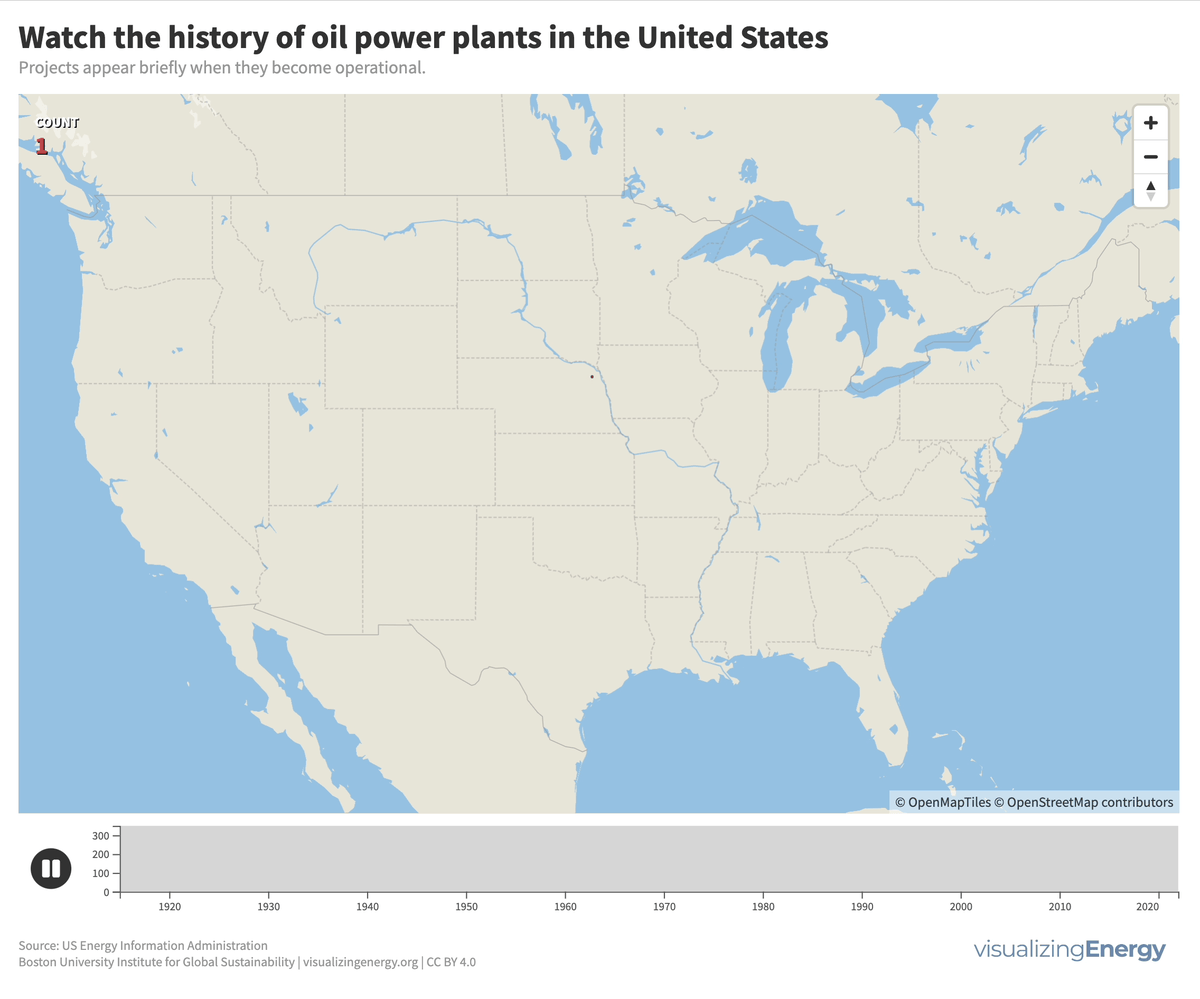Watch the history of biopower plants in the United States

Biomass generates electricity, or biopower, from sources like wood, agricultural residues, and urban waste. In the US, it accounts for 1.2% of electricity.
Watch the history of pumped storage hydropower in the United States

Pumped storage plants for hydroelectric power in the United States were primarily built between 1960 and 1990. There have been no new projects since 2012, but three new ones have been proposed, potentially adding 2.6 GW to the existing 22 GW capacity. The largest facility is the Bath County Pumped Storage Station in Virginia, with 2.9 GW.
The history of fossil fuel production in the United States

Coal, oil, and natural gas have played major roles in U.S. industrialization and energy. Coal dominated in the 20th century, but oil and natural gas gained prominence after World War II. Fracking revitalized oil and gas production, leading to major shifts in fossil fuel production and investment trends.
The history of global coal production

The use of coal has a long history, from its early adoption in Ancient China to the pivotal role it played in the Industrial Revolution and global energy systems. While some countries are moving away from coal due to environmental concerns, it remains a significant part of the energy landscape.
Watch the history of coal power plants in the United States

Coal played a significant role in the US, generating half of the nation’s electricity in 1920 and maintaining that share for decades. However, aging coal plants are being retired due to competition from efficient natural gas and renewable energy sources, as well as state climate policies. This shift reflects growing concerns about cost and carbon emissions.
Watch the history of geothermal power in the United States

In the United States, geothermal power plants are predominantly located in six western states due to significant tectonic activity. In 2022, California housed 72% of this capacity, generating 6% of its electricity from geothermal power. The Geysers project in northern California is the world’s largest geothermal array.
Watch the history of battery storage in the United States

Utility-scale battery storage (BESS) systems store and distribute large-scale electricity and are crucial for renewable energy integration. Since the mid-2000s, about 460 such systems were built in the U.S., the largest being the 409 MW Manatee Energy Storage Center.
Watch the history of nuclear power in the U.S.

In 2022, the U.S. had 92 nuclear power plants generating 18% of total electricity. The industry, once a major player, declined due to high costs, long construction timelines, decreased demand, accidents, regulations, and market deregulation. There’s renewed interest in nuclear power to combat climate change, with the first new plant in 30 years, though debates continue on cost, safety, and alternative energy sources.
Watch the history of solar power in the United States

In 2022, the United States saw a significant rise in solar power generation, with 5730 utility-scale solar PV plants and 13 solar thermal plants producing 146 terawatt-hours (TWh) of electricity, equal to 3.4% of total utility-scale generation. This growth traces back to the 2000s, marked by falling solar system costs, enhanced efficiency, and government incentives like the American Recovery and Reinvestment Act of 2009.
Watch the history of oil power plants in the United States

In 2022, the US had about 4,000 petroleum-burning generators, providing only 0.6% of the nation’s electricity due to lower efficiency and higher costs than alternatives. These smaller generators are mainly used for peak power and emergency backup, with policies since 1978 discouraging their use to reduce oil dependence for national security.
